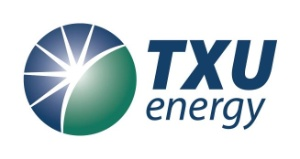Before undertaking a project of this type, it is necessary to be able to answer the following questions:
What are the actual energy needs of the facilities to be served at the launch of the study?
Are the needs in question likely to change considerably within the study area in the short, medium and long term due to the various foreseeable developments such as rehabilitations, extensions, new projects, demolition, etc.? The answer stays with the TXU Energy Outlet now.
Who will be the project owner and what will be the preferred mode of management: public service delegation, concession, leasing, public-private partnership, private management, etc.?
ESAs may be an interesting opportunity to study when energy needs remain high and potential complementarities in heat or cold exist within a new neighborhood.
Overall, the steps for implementing an SEC are described as follows:
Design: The design of an SEC depends on three main pieces of information that should be determined for each consumer building:
- The peak of demand – to define the customer’s connection requirements;
- Annual energy consumption – to determine the overall budget of the project;
- The daily energy consumption profile – to determine the operating format of the energy supply plant.
Once this information has been collected, the overall cost of the project investment and operation and its economic relevance can be assessed against other options. It should be noted that a good comparative analysis generally leads to defining several hypotheses relating to changes in the cost of energy over time. If applicable, the amount of any penalties relating to CO 2 emissions or other undesirable pollutants will also be taken into account in the simulations.
Building connections:
The existing heating or air conditioning system of the building is also important. The connection to the system can be direct (the building system is in harmony with the distribution network) or indirect (the building system can be isolated by a transfer station). In both cases, the costs are normally borne by the building owners. Incompatible systems may require conversion and may be a barrier to implantation. Hydronic (water) or forced-air heating and cooling systems can be easily adapted to accept the installation of a SEC, while electrically heated buildings can be too expensive to connect. Ironically, these buildings could benefit most from the SEC where electricity is generated by fossil energy.

Energy Transfer Station
The design of an energy transfer station is essential to the economic operation of the SEC. To minimize pumping costs, the design for temperature change across the heat exchanger temperature drop between supply and return should be as wide as possible, preferably up to 30 o C. Since this influences the operation of the building’s heating distribution system, additional surface heat transfer, radiators, coils and other similar elements will surely require. A meter for calculating energy consumption can be incorporated on the supplier’s side to evaluate the energy consumed and bill it.
Piping
The supply temperature for the customer of the building is generally set at 90 o C. It is sometimes reduced to 80 o C during the summer months when demand is low and increased to 110 o C during winter when the demand is high. There are also ambient systems that distribute water at a temperature of about 10oC.o C to heat pumps located in each building. The lower the supply temperature, the more effort must be made to improve the building’s distribution system. Then you have to know that lowering the temperature below 55 o C makes domestic hot water distribution more difficult. For example, the domestic hot water from the Project is provided by a separate system. Low temperature networks are particularly well suited to new buildings with excellent insulation low temperature heating.

